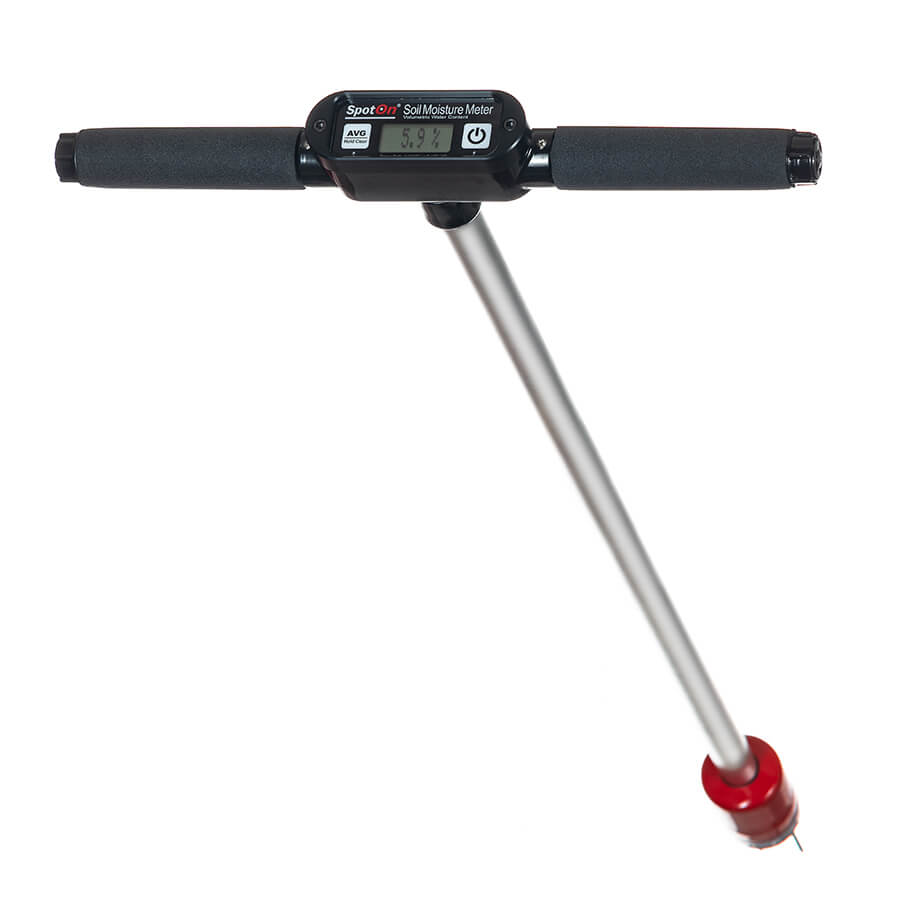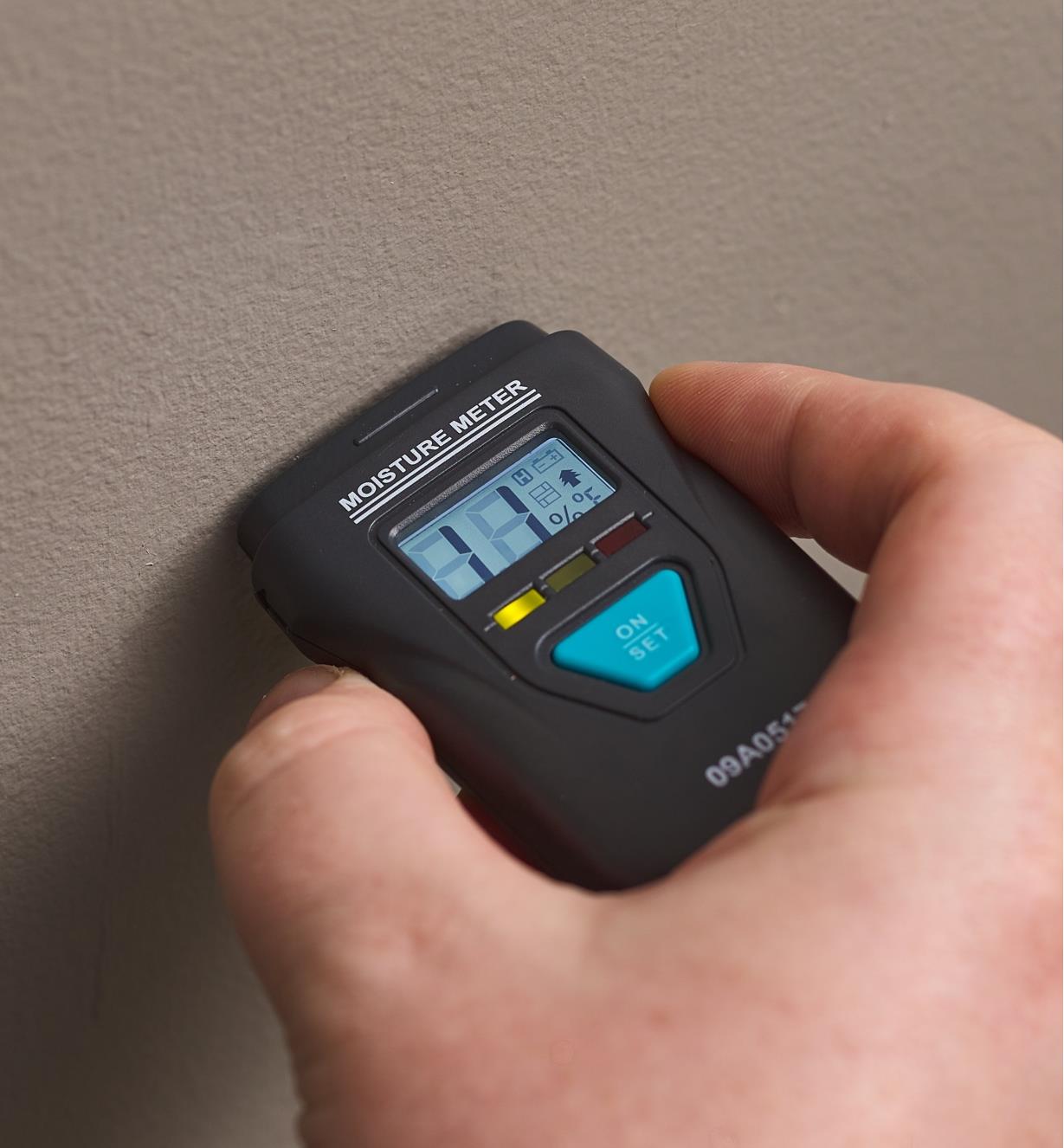How a Moisture Meter Can Improve Your Construction Jobs and Protect Against Damages
How a Moisture Meter Can Improve Your Construction Jobs and Protect Against Damages
Blog Article
Understanding the Value of a Wetness Meter in Avoiding Mold And Mildew and Water Damages in Your Home
In the world of home maintenance, the visibility of dampness can frequently be a quiet yet powerful opponent, efficient in triggering pervasive mold and mildew growth and dangerous water damages if left untreated. Among the relaxing setting of a residence, hidden dampness issues can brew below the surface area, posing a danger to both building and health. Nonetheless, furnished with the right devices and understanding, home owners can proactively battle these potential dangers. Understanding the relevance of a dampness meter in this fight is not merely a choice but a tactical requirement.

Value of Wetness Discovery
Reliable moisture detection methods are essential for safeguarding residential properties and preventing prospective mold development and water damage. Moisture can permeate right into different building materials, bring about architectural issues and health and wellness threats - Moisture Meter. By making use of a moisture meter, homeowner can proactively identify areas prone to excess dampness, enabling prompt treatment and mitigation techniques
Dampness meters give exact analyses of wetness degrees in various products such as wood, concrete, and drywall. This data assists in determining locations of problem, even in concealed or hard-to-reach areas. Early discovery of wetness accumulation enables prompt repair services or modifications to stop additional damages.

Just How Moisture Meters Work
Moisture meters play a pivotal duty in the aggressive recognition of excess dampness, helping in the prevention of possible mold and mildew growth and water damage by supplying precise analyses of wetness levels in numerous structure materials. These tools work based upon various concepts, depending upon their kind. Pin-type wetness meters, for instance, have two pins that penetrate the product to determine the electric resistance between them. When wetness exists, it improves the material's conductivity, bring about a lower resistance reading. Pinless dampness meters, on the other hand, usage electromagnetic sensing units to check the material without creating damage. These sensing units emit electromagnetic signals that pass through the material and measure the dielectric homes, showing dampness content. Some advanced dampness meters pin both combine and pinless modern technologies for comprehensive moisture detection. Understanding exactly how moisture meters feature is vital for prompt and accurate wetness level assessments, enabling effective precautionary steps against mold and mildew and water damage.
Detecting Early Caution Indications
Upon preliminary examination of a property, identifying refined indicators of excess moisture comes to be crucial in the very early discovery of prospective mold and mildew development and water damage. Some usual very early indication consist of musty odors, water discolorations on wall surfaces or ceilings, peeling off paint or wallpaper, and distorted or discolored surface areas. Moldy smells often suggest the his comment is here presence of mold and mildew or mildew, even if no noticeable signs appear. Water discolorations can signal leakages or seepage, while peeling off paint or wallpaper might be a result of wetness endangering the adhesion of these products to the surface. Warped or discolored surfaces, such as bending floorboards or blemished drywall, are clear indications of anchor water damages. Moisture Meter. Furthermore, a rise in allergy signs and symptoms or breathing concerns amongst residents might recommend the visibility of mold as a result of excess dampness. By quickly recognizing and dealing with these very early warning signs, homeowners can reduce the risk of extensive mold development and water damage in their residential or commercial properties.


Protecting Against Mold Development
Recognizing early indication of excess moisture within a home not only makes it possible for prompt discovery of possible mold and mildew development and water damages but likewise works as a positive procedure in preventing the spreading of mold. To properly avoid mold and mildew growth, it is critical to resolve any resources of wetness immediately. This can consist of repairing leaks in roofings, windows, or pipelines, making certain correct air flow in moist areas like shower rooms and cooking areas, and using dehumidifiers in high-humidity areas. Frequently evaluating and preserving the residential property's plumbing, roof, and gutters can additionally assist in avoiding water breach that can lead to mold growth.
Along with dealing with moisture resources, maintaining interior humidity levels below 60% can dramatically prevent mold and mildew development. Appropriate air flow, appropriate insulation, and utilizing ac unit or fans can help manage interior humidity levels. Keeping an eye on dampness levels in areas susceptible to wetness, such as basements and creep rooms, using a moisture meter can additionally help a fantastic read in very early detection of raised dampness degrees and potential mold and mildew development. By taking aggressive steps to avoid excess moisture and mold and mildew development, property owners can protect their building and indoor air quality.
Advantages of Regular Surveillance
Regular tracking of dampness levels in a building can play a crucial duty in keeping a healthy and balanced indoor environment and stopping potential mold and mildew and water damages. By routinely checking moisture degrees, property owners can discover any kind of concerns without delay and take needed actions to prevent mold development and water damage.
In addition, regular monitoring allows property owners to track patterns and patterns in dampness levels over time. By developing a baseline and tracking modifications, people can determine any locations of problem or prospective vulnerabilities in the building's structure. This data-driven technique makes it possible for targeted treatments and maintenance efforts to attend to underlying issues before they escalate right into even more substantial issues. Eventually, the regular tracking of dampness degrees empowers homeowners to safeguard their residential or commercial property, guard their health, and preserve the honesty of their indoor setting.
Final Thought
In final thought, the usage of a dampness meter is essential in stopping mold and water damage in homes. By discovering early caution signs of wetness, house owners can take proactive measures to avoid mold and mildew growth and pricey repair work.
By using a wetness meter, building proprietors can proactively recognize locations vulnerable to excess wetness, enabling for prompt intervention and reduction strategies.
Dampness meters offer exact analyses of moisture levels in various materials such as concrete, timber, and drywall.Dampness meters play an essential function in the proactive recognition of excess dampness, helping in the avoidance of possible mold growth and water damages by offering exact readings of dampness levels in numerous building materials. Understanding how moisture meters function is important for timely and accurate moisture level evaluations, enabling reliable precautionary measures versus mold and mildew and water damages.
Checking wetness degrees in areas susceptible to moisture, such as cellars and crawl areas, using a moisture meter can additionally aid in early detection of elevated moisture degrees and possible mold development.
Report this page